
How to Use BMP180: Examples, Pinouts, and Specs
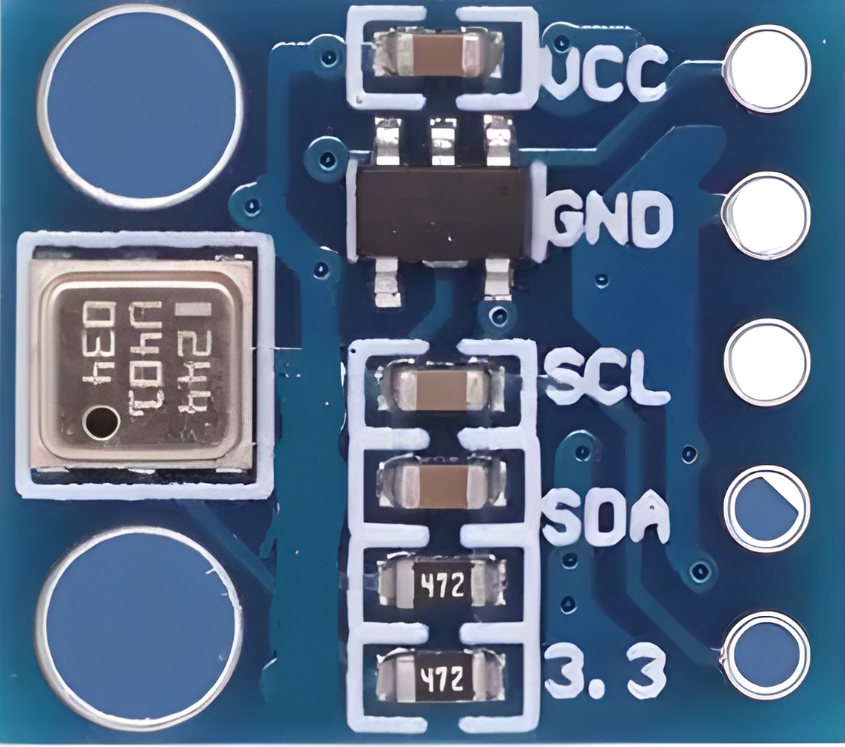
 Design with BMP180 in Cirkit Designer
Design with BMP180 in Cirkit DesignerIntroduction
The BMP180 is a high-precision, ultra-low power digital barometer designed for use in a wide range of applications, particularly those involving weather monitoring, GPS navigation, and altitude control systems. It measures atmospheric pressure and temperature, which can be used to calculate altitude. Its small form factor and low power consumption make it ideal for mobile applications.
Explore Projects Built with BMP180
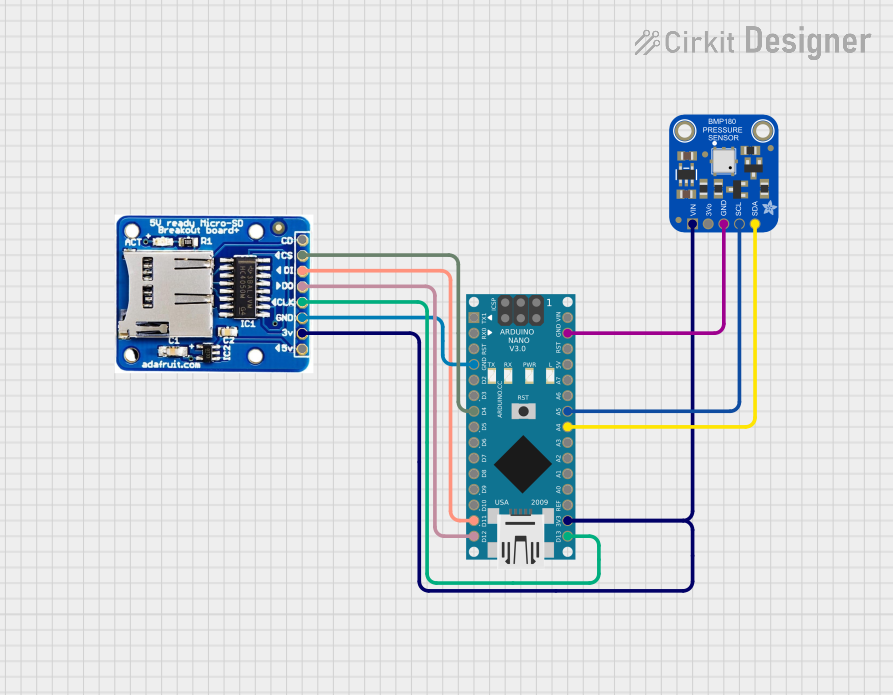
 Open Project in Cirkit Designer
Open Project in Cirkit Designer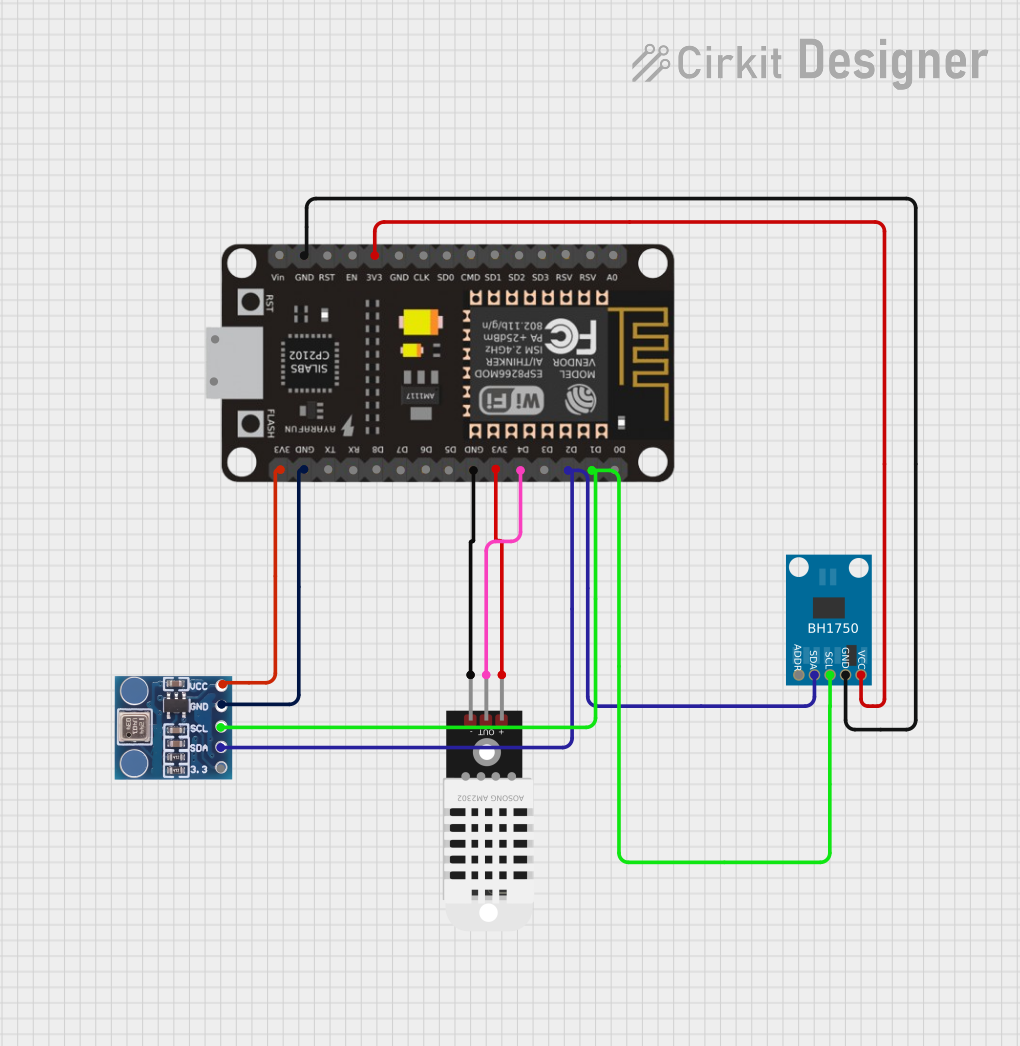
 Open Project in Cirkit Designer
Open Project in Cirkit Designer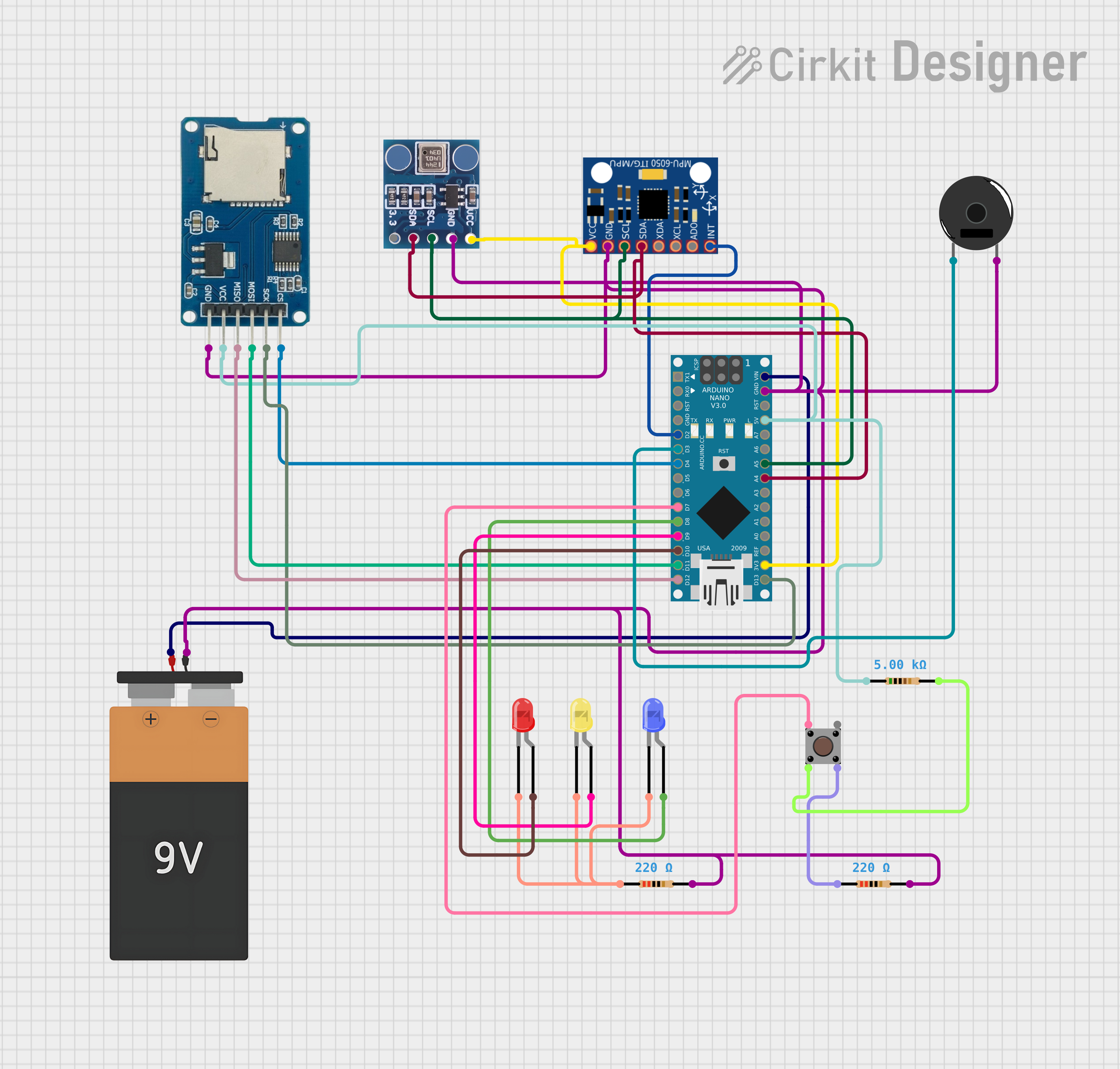
 Open Project in Cirkit Designer
Open Project in Cirkit Designer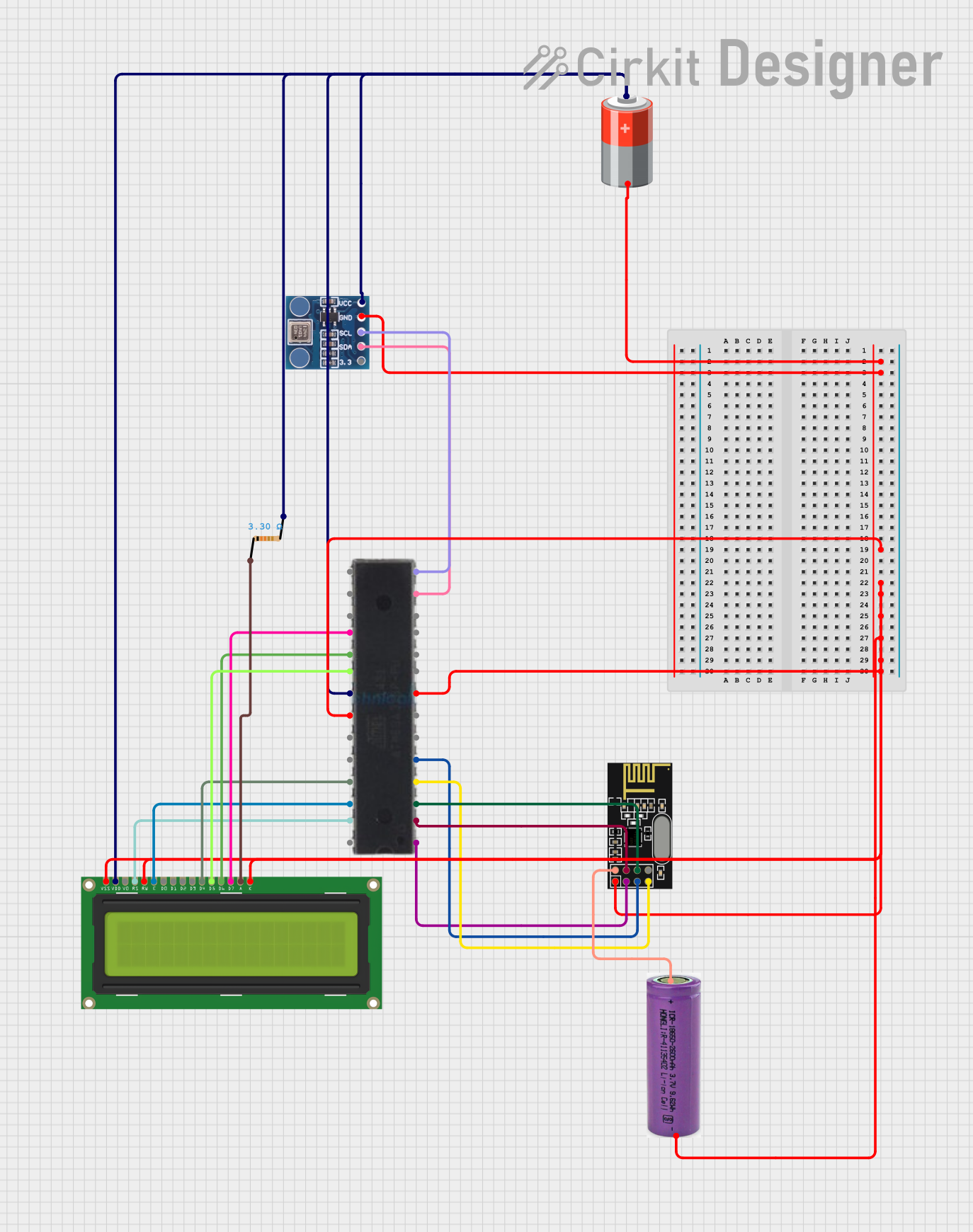
 Open Project in Cirkit Designer
Open Project in Cirkit DesignerExplore Projects Built with BMP180

 Open Project in Cirkit Designer
Open Project in Cirkit Designer
 Open Project in Cirkit Designer
Open Project in Cirkit Designer
 Open Project in Cirkit Designer
Open Project in Cirkit Designer
 Open Project in Cirkit Designer
Open Project in Cirkit DesignerCommon Applications and Use Cases
- Personal weather stations
- GPS navigation systems
- Altitude control for drones and other RC aircraft
- Indoor navigation (floor detection)
- Fitness and health monitoring (e.g., smartwatches)
Technical Specifications
Key Technical Details
- Supply Voltage: 1.8V - 3.6V
- Average Current Consumption: 0.5 µA (at 1Hz sampling rate)
- Pressure Range: 300 to 1100 hPa (equivalent to +9000m to -500m above/below sea level)
- Temperature Range: -40 to +85°C
- Interface: I2C
- Resolution: 0.01 hPa (pressure), 0.1°C (temperature)
Pin Configuration and Descriptions
| Pin Number | Name | Description |
|---|---|---|
| 1 | VCC | Power supply (1.8V to 3.6V) |
| 2 | GND | Ground connection |
| 3 | SCL | I2C clock line |
| 4 | SDA | I2C data line |
| 5 | XCLR | Master clear input (active low, optional use) |
| 6 | EOC | End of conversion output signal (optional use) |
Usage Instructions
How to Use the BMP180 in a Circuit
- Connect the VCC pin to the power supply (1.8V to 3.6V).
- Connect the GND pin to the ground of the power supply.
- Connect the SCL and SDA pins to the I2C clock and data lines, respectively.
- (Optional) Connect the XCLR pin to a digital output on your microcontroller if you wish to reset the sensor via software.
- (Optional) Connect the EOC pin to a digital input on your microcontroller if you wish to use the end of conversion signal.
Important Considerations and Best Practices
- Ensure that the power supply is stable and within the specified voltage range.
- Use pull-up resistors on the I2C lines (typically 4.7kΩ to 10kΩ).
- Avoid placing the sensor near heat sources to prevent inaccurate temperature readings.
- For accurate pressure readings, calibrate the sensor at a known altitude.
Example Code for Arduino UNO
#include <Wire.h>
#include <Adafruit_BMP085.h>
Adafruit_BMP085 bmp;
void setup() {
Serial.begin(9600);
if (!bmp.begin()) {
Serial.println("Could not find a valid BMP180 sensor, check wiring!");
while (1) {}
}
}
void loop() {
float temperature = bmp.readTemperature();
long pressure = bmp.readPressure();
float altitude = bmp.readAltitude();
Serial.print("Temperature = ");
Serial.print(temperature);
Serial.println(" *C");
Serial.print("Pressure = ");
Serial.print(pressure);
Serial.println(" Pa");
Serial.print("Altitude = ");
Serial.print(altitude);
Serial.println(" meters");
delay(1000);
}
Troubleshooting and FAQs
Common Issues
- Inaccurate Readings: Ensure the sensor is not subjected to sudden temperature changes and is calibrated correctly.
- No Data on I2C: Check the wiring, ensure pull-up resistors are in place, and verify that the power supply is within the specified range.
- Sensor Not Detected: Make sure the sensor is correctly wired to the I2C bus and that there are no shorts or open circuits.
Solutions and Tips for Troubleshooting
- Double-check all connections and solder joints.
- Use a multimeter to verify the voltage at the VCC pin.
- Implement a check in your code to confirm the sensor is initialized correctly.
- If using long wires for I2C, consider using shielded cables or twisted pairs to reduce noise.
FAQs
Q: Can the BMP180 be used to measure altitude? A: Yes, the BMP180 can calculate altitude based on atmospheric pressure changes.
Q: What is the accuracy of the BMP180 sensor? A: The BMP180 can measure pressure with an accuracy of ±0.03 hPa and temperature with an accuracy of ±0.1°C.
Q: How do I calibrate the BMP180 sensor? A: Calibration typically involves taking a reading at a known altitude and temperature, then using these values to adjust subsequent readings.
Q: Is the BMP180 sensor waterproof? A: No, the BMP180 is not waterproof and should be protected from moisture and water exposure.